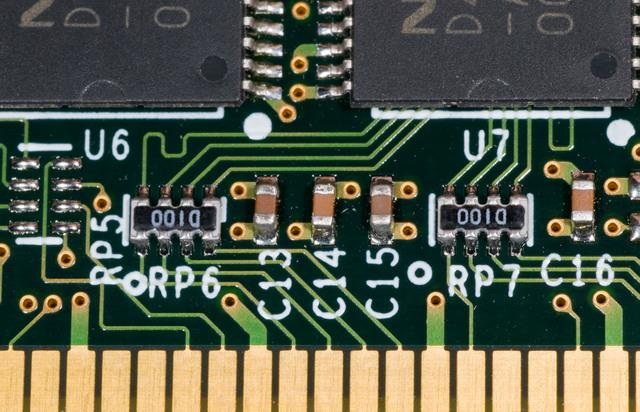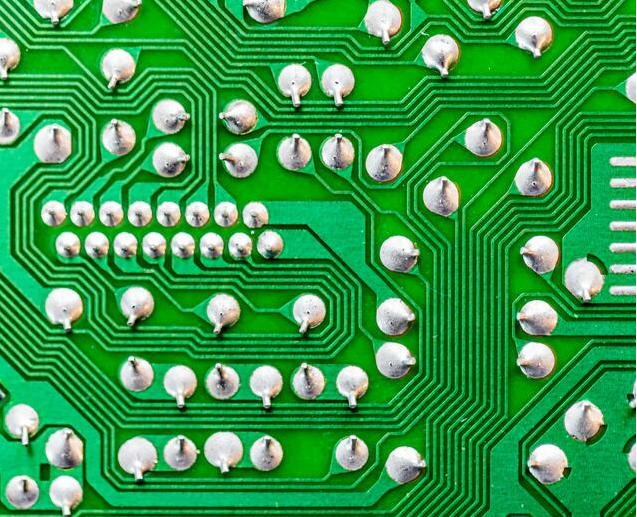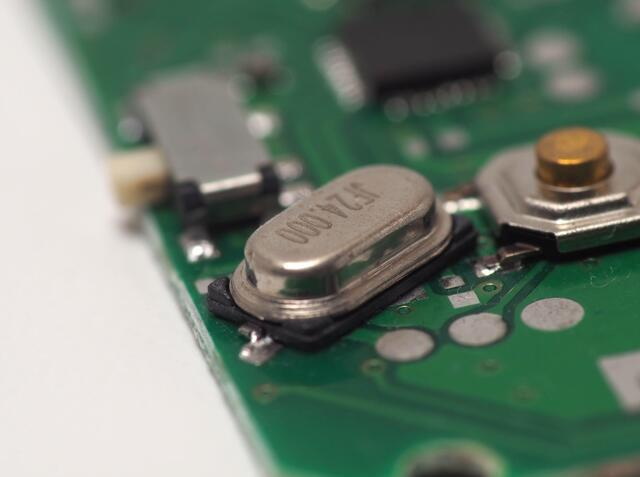Content Menu
● Understanding SMT Nozzles
>> Key Functions of SMT Nozzles
● Types of SMT Nozzles
>> Specialized Nozzle Designs
● Material Considerations
>> Material Selection Criteria
● Selecting the Right SMT Nozzle
● Maintenance of SMT Nozzles
>> Advanced Maintenance Techniques
● Impact on Production Efficiency
● Future Trends in SMT Nozzle Technology
● Conclusion
● FAQ
>> 1. What are pick and place SMT nozzles?
>> 2. How do I choose the right SMT nozzle?
>> 3. What materials are commonly used for SMT nozzles?
>> 4. Why is maintenance important for SMT nozzles?
>> 5. How do SMT nozzles impact production efficiency?
● Citations:
The evolution of electronics manufacturing has significantly shifted towards automation, particularly in the realm of Surface Mount Technology (SMT). Central to this technological advancement is the pick and place machine, which relies heavily on SMT nozzles for efficient and accurate component placement on printed circuit boards (PCBs). This article delves into the critical role of pick and place SMT nozzles in PCB assembly, exploring their functions, types, selection criteria, maintenance, and impact on production efficiency.

Understanding SMT Nozzles
SMT nozzles are specialized tools used in pick and place machines to handle various electronic components during the assembly process. These nozzles utilize vacuum suction to pick components from feeders or trays and place them accurately onto PCBs. The effectiveness of the pick and place operation hinges on the type and quality of these nozzles.
Key Functions of SMT Nozzles
- Component Handling: The primary function of SMT nozzles is to pick up components securely and transfer them to their designated locations on the PCB.
- Precision Placement: Nozzles are designed to ensure that components are placed with high accuracy, which is crucial for the functionality of electronic devices.
- Vacuum Mechanism: By creating a vacuum seal, nozzles can hold components firmly during transport. This is essential for preventing misalignment or dropping components.
- Image Background for Vision Systems: In automated assembly lines, SMT nozzles also serve as a background for optical vision systems that inspect components before placement. This enhances image contrast and clarity, allowing for better detection of defects.
Types of SMT Nozzles
There are various types of SMT nozzles available in the market, each designed to cater to specific component shapes and sizes. The most common types include:
- Round Nozzles: Ideal for cylindrical components like capacitors.
- Square Nozzles: Suitable for square-shaped components such as some resistors.
- V-Shaped Nozzles: Often used for components with edges or specific geometries.
- Custom Nozzles: Tailored designs that accommodate unique component shapes or sizes.
Specialized Nozzle Designs
In addition to standard nozzle shapes, there are specialized designs that cater to specific industries or applications. For example:
- High-Temperature Nozzles: Designed to withstand elevated temperatures during processes like reflow soldering, ensuring durability and performance under extreme conditions.
- Anti-Static Nozzles: These nozzles are treated with anti-static materials to prevent electrostatic discharge (ESD), which can damage sensitive electronic components.
- Micro-Nozzles: Used for very small components such as chips or microcontrollers, these nozzles provide precision handling required for intricate assemblies.
Material Considerations
The material used in manufacturing SMT nozzles significantly impacts their performance and longevity. Common materials include:
- Plastic: Lightweight and cost-effective but less durable; suitable for low-volume applications.
- Tungsten Steel: Durable and resistant to wear but may discolor over time; suitable for high-volume production.
- Ceramic: Offers excellent durability without discoloration but is more brittle and prone to breakage.
- Diamond-Coated Steel: Extremely durable and resistant to wear but comes at a higher cost.
Material Selection Criteria
When selecting materials for SMT nozzles, manufacturers should consider:
1. Cost Efficiency: While high-end materials like diamond-coated steel offer durability, they may not be necessary for all applications. Balancing cost with performance is essential.
2. Application Requirements: The specific requirements of the PCB assembly process will dictate material choice. For instance, high-speed production lines may benefit from more robust materials that can withstand frequent use.
3. Environmental Factors: Consideration should be given to the operating environment. For example, if the assembly process involves exposure to chemicals or extreme temperatures, materials must be chosen accordingly.

Selecting the Right SMT Nozzle
Choosing the appropriate SMT nozzle is critical for optimizing the pick and place process. Factors to consider include:
1. Component Size and Shape: Ensure that the nozzle's diameter is compatible with the component's dimensions. For instance, an 0805 resistor typically requires a specific nozzle size (e.g., CN065).
2. Material Compatibility: Different materials require different nozzle types. For sticky components, a rubber-tipped nozzle may be more effective.
3. Production Volume: High-volume productions may benefit from more durable materials like tungsten steel or diamond-coated options to reduce replacement frequency.
4. Nozzle Shape: Select a nozzle shape that matches the component geometry to ensure secure handling.
5. Calibration Needs: Regular calibration is essential for maintaining placement accuracy. Each nozzle may have unique calibration requirements based on its design and usage.
6. Suction Force Requirements: Different components require different levels of suction force; thus, selecting a nozzle capable of providing adequate suction strength is vital for successful handling.
7. Compatibility with Pick and Place Machine: Ensure that the selected nozzle is compatible with the specific model of the pick and place machine being used, as different machines may have unique specifications regarding nozzle fitting and operational parameters.
Maintenance of SMT Nozzles
Proper maintenance of pick and place SMT nozzles is crucial for ensuring consistent performance and minimizing defects during PCB assembly. Key maintenance practices include:
- Regular Cleaning: Dust and debris can accumulate on nozzles, affecting their suction capabilities. Regular cleaning helps maintain optimal performance by preventing blockages that could lead to component drop-offs during placement.
- Inspection for Wear: Frequent checks for wear and tear can prevent unexpected failures during production runs. This includes checking for cracks or deformation in the nozzle structure that could compromise its functionality.
- Calibration Checks: Regular calibration ensures that nozzles are aligned correctly with the PCB's placement coordinates, reducing misalignment issues that can lead to faulty assemblies.
Advanced Maintenance Techniques
In addition to basic maintenance practices, advanced techniques can further enhance nozzle longevity:
- Ultrasonic Cleaning: Utilizing ultrasonic cleaners can effectively remove microscopic debris from nozzles without damaging them, ensuring optimal suction performance.
- Preventive Maintenance Schedules: Establishing a preventive maintenance schedule can help identify potential issues before they affect production efficiency. This includes routine inspections and timely replacements based on usage patterns.
Impact on Production Efficiency
The efficiency of PCB assembly processes is heavily influenced by the quality of SMT nozzles used. Here's how they contribute to overall productivity:
- Reduced Cycle Times: High-quality nozzles enhance the speed at which components are picked and placed, reducing overall cycle times in manufacturing processes. This leads to faster turnaround times for product delivery.
- Minimized Defects: Accurate placement reduces defects related to misaligned components, leading to higher first-pass yields. This not only improves product quality but also enhances customer satisfaction due to fewer returns or complaints regarding faulty products.
- Lower Rework Costs: By ensuring precise placement from the outset, companies can avoid costly rework associated with defective assemblies. This contributes significantly to overall cost savings in manufacturing operations.
Future Trends in SMT Nozzle Technology
As technology continues to evolve, several trends are emerging in SMT nozzle design and application:
- Smart Nozzle Technology: Integration of sensors within nozzles can provide real-time feedback on component handling performance, allowing manufacturers to make adjustments dynamically during production runs.
- 3D Printing of Custom Nozzles: The advent of 3D printing technology allows manufacturers to quickly produce custom-designed nozzles tailored specifically for unique component shapes or sizes without incurring significant costs or lead times associated with traditional manufacturing methods.
- Increased Automation Integration: As factories move towards Industry 4.0 standards, there will be greater integration between pick and place machines and other automated systems within manufacturing lines, enhancing overall efficiency through improved communication between devices.
Conclusion
In summary, pick and place SMT nozzles play an indispensable role in modern PCB assembly processes. Their ability to handle various component types with precision directly affects production efficiency, quality control, and overall operational costs. As technology continues to advance, investing in high-quality nozzles tailored to specific manufacturing needs will remain vital for businesses aiming to maintain competitiveness in the electronics industry.
With ongoing innovations in materials science and automation technology, we can expect further enhancements in nozzle design that will continue to improve efficiency while reducing costs in PCB assembly processes across various sectors.

FAQ
1. What are pick and place SMT nozzles?
Pick and place SMT nozzles are specialized tools used in automated machines to pick up electronic components from feeders or trays and accurately place them onto printed circuit boards (PCBs).
2. How do I choose the right SMT nozzle?
To select the right SMT nozzle, consider factors such as component size and shape, material compatibility, production volume requirements, nozzle shape suitability, suction force requirements, calibration needs, and compatibility with your specific pick-and-place machine model.
3. What materials are commonly used for SMT nozzles?
Common materials include plastic (lightweight but less durable), tungsten steel (durable but may discolor), ceramic (offers excellent durability without discoloration but is brittle), diamond-coated steel (extremely durable but more expensive), among others tailored for specific applications like high-temperature or anti-static environments.
4. Why is maintenance important for SMT nozzles?
Regular maintenance ensures optimal performance by preventing dust accumulation, checking for wear, maintaining accurate calibration—ultimately reducing defects during production runs while extending the lifespan of your equipment.
5. How do SMT nozzles impact production efficiency?
High-quality SMT nozzles enhance cycle times by speeding up component handling while minimizing defects through accurate placement—leading to lower rework costs and improved first-pass yields while ensuring timely product delivery.
Citations:
[1] https://iconnect007.com/index.php/article/52613/smt-preventive-maintenance-stop-5-major-problems-with-pick-and-place-nozzles/52616
[2] https://www.restronicsmetro.com/blog/everything-you-need-to-know-about-smt-pick-and-place-machines
[3] https://www.surfacemountprocess.com/component-placement-process.html
[4] https://www.tronstol.com/selection-and-function-of-pick-and-place-nozzle.html
[5] https://www.itechsmt.com/blogs/news/how-to-use-the-smt-nozzle-flexiable
[6] https://www.itechsmt.com/blogs/news/how-to-choose-smt-nozzle-for-your-pick-and-place-machine
[7] https://www.zjyingxing.com/info/what-is-the-role-of-nozzle-calibration-in-smt-87605940.html
[8] https://www.tronstol.com/the-functions-of-suction-nozzle-of-pick-and-place-machine.html
[9] https://www.neodensmt.com/news/do-you-know-the-function-and-choice-for-smt-no-39242403.html




















